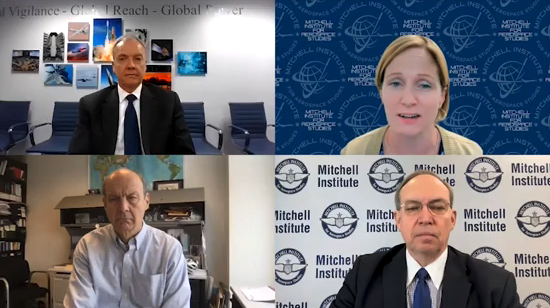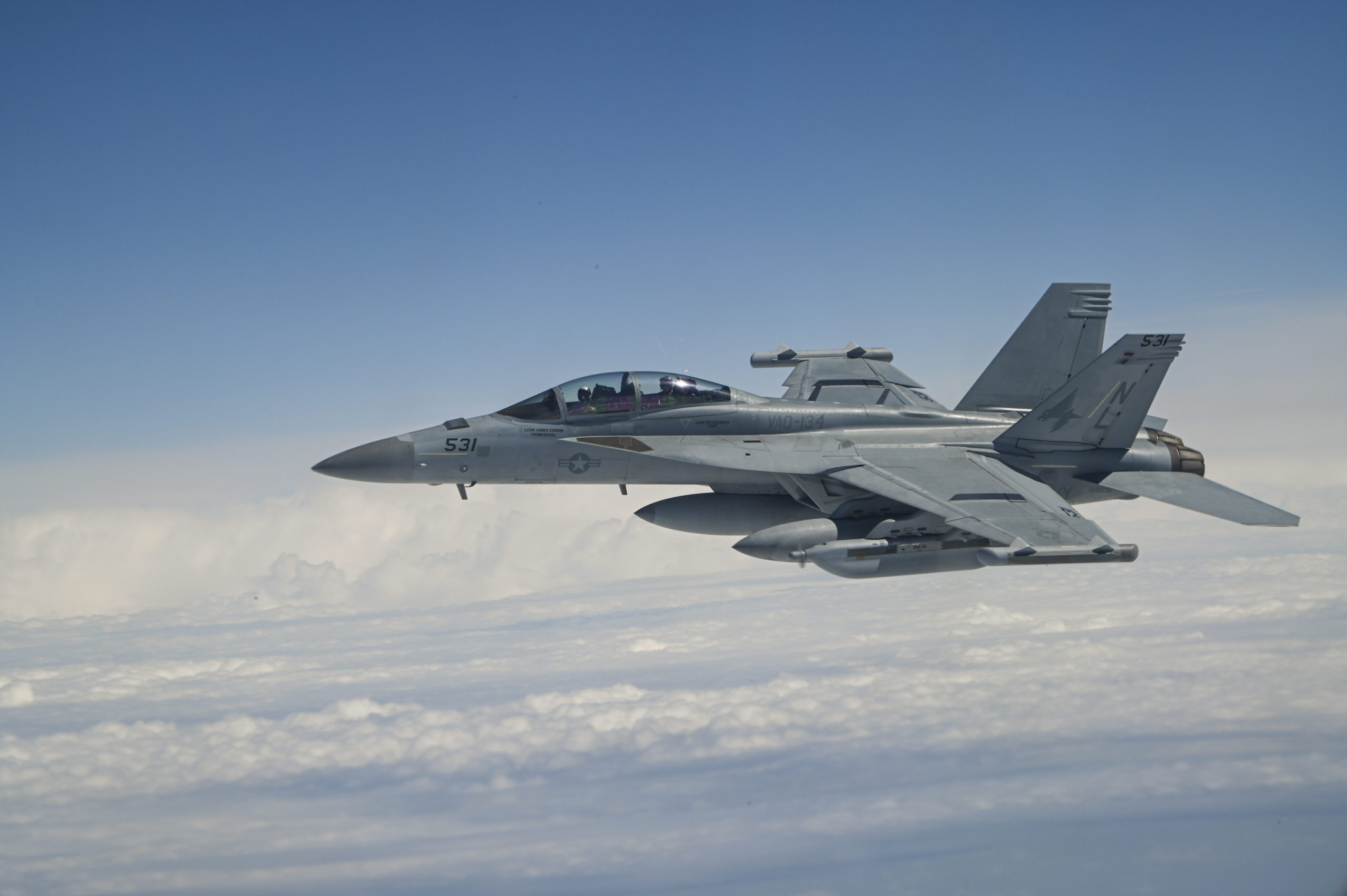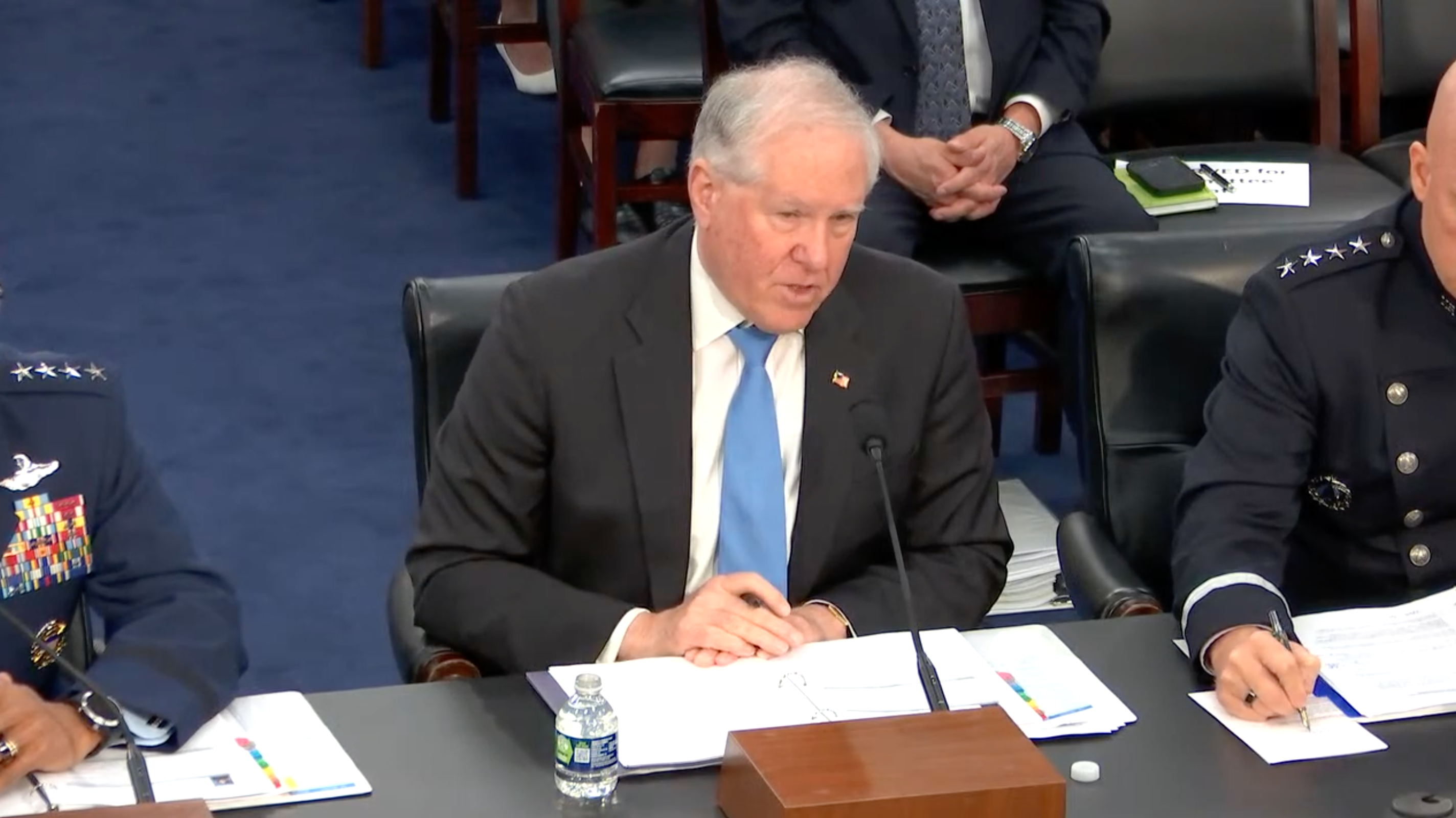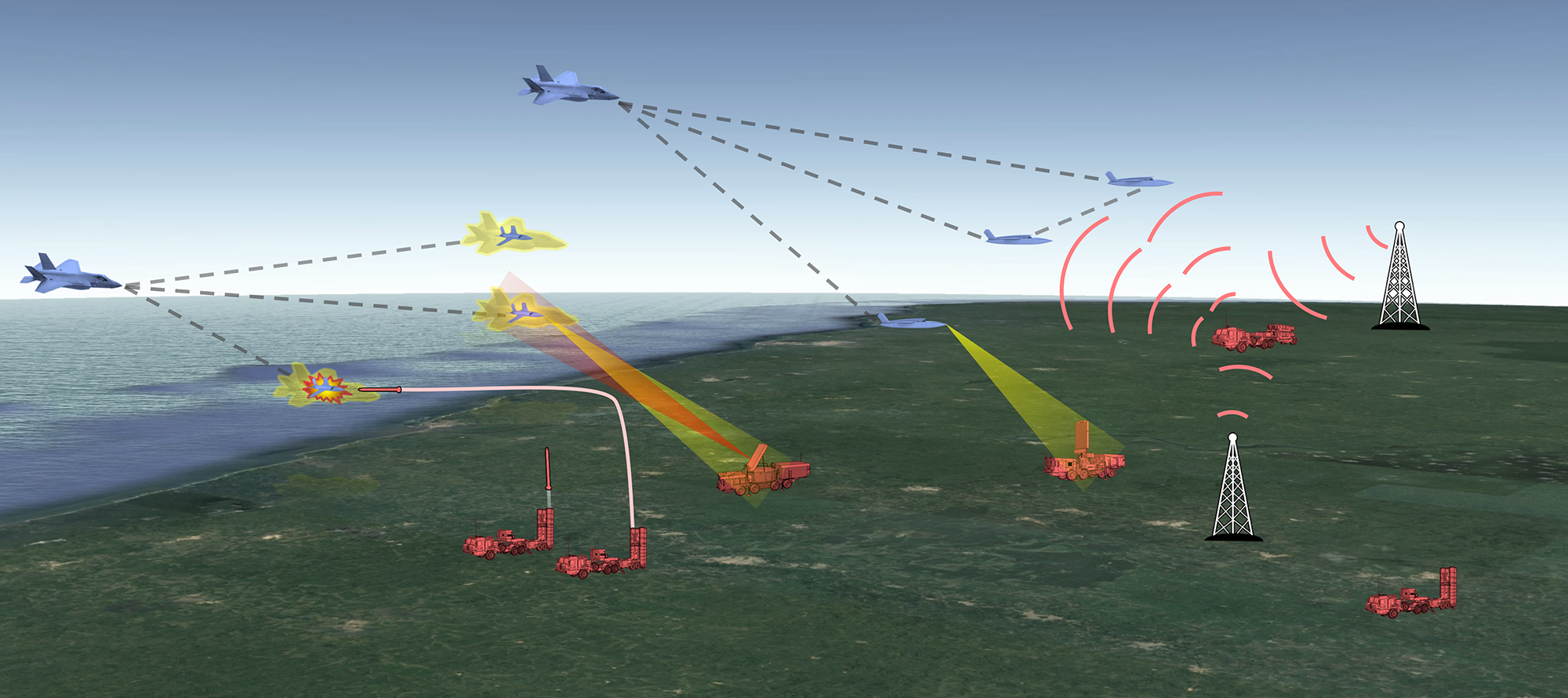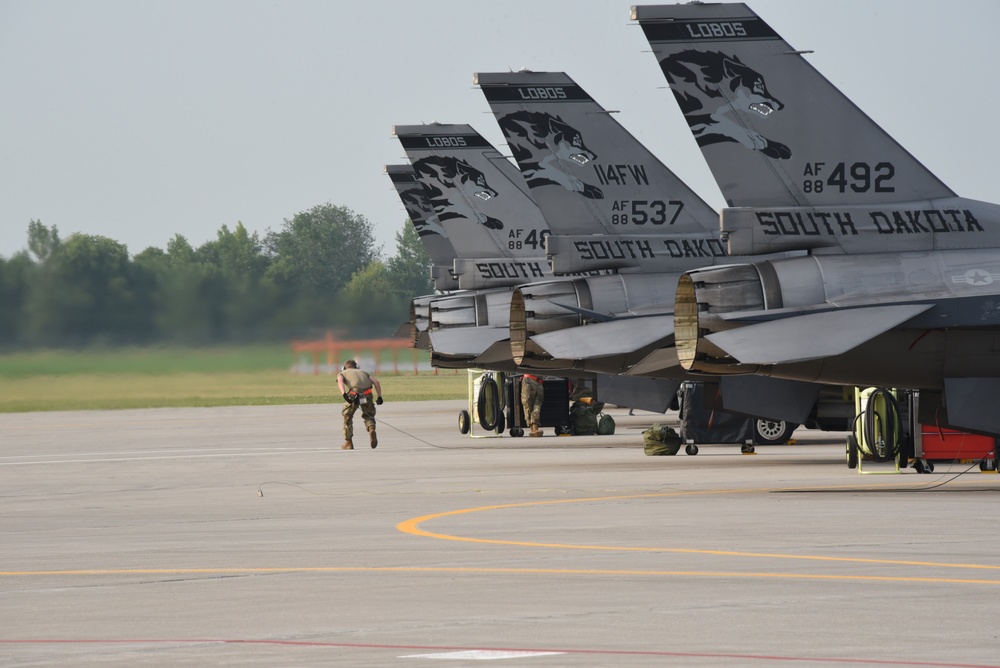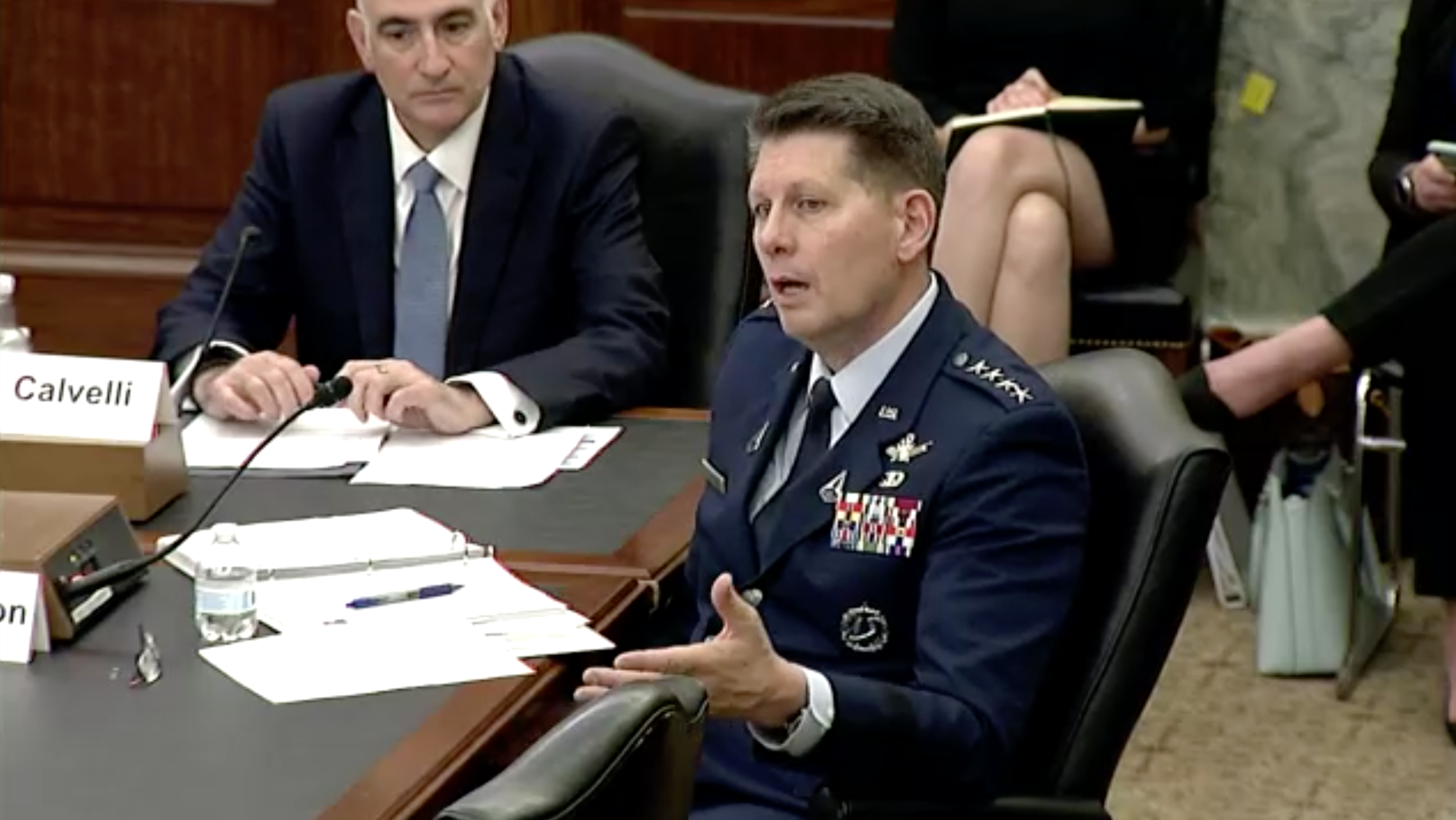The Space Force plans to add three new intelligence squadrons in the next two years, said Lt. Gen. Stephen N. Whiting, commander of the service’s Space Operations Command.
The additions would double the number of squadrons in Space Delta 7, whose intel Guardians already work on missile warning and defense, electronic warfare, and research and development.
In an online discussion hosted by the Mitchell Institute for Aerospace Studies, Whiting described the advances the Space Force has made in intelligence since becoming the sixth military service.
Organizationally like a major command in the Air Force, the Colorado-based Space Operations Command, a field command, sits “at the nexus” of the Space Force and the newly re-created U.S. Space Command, Whiting explained.
Possessing “all the the operational capability in the Space Force,” SpOC, as it’s known for short, also serves as the Space Force’s component within U.S. Space Command—the combatant command’s largest component assigned there from any of the military services.
Describing SpOC’s work, Whiting said, “Think of missions like space domain awareness, electromagnetic warfare, missile warning, operational-level command and control, defensive cyber capabilities, intelligence, surveillance, and reconnaissance, satellite communications, precision, navigation, and timing, orbital warfare—and then we also run the bases from which we operate.”
Adding more intelligence activities would contribute to the command’s priority of being “ISR-led and cyber secure,” Whiting said.
Governments such as China’s and Russia’s can attack satellites in orbit, but they and others such as North Korea or Iran could also mount cyberattacks—considered the “soft underbelly” of the U.S. satellite infrastructure—because of the “lower bar to entry,” Whiting said.
Citing Russia’s 1,500 pieces of “long-lived debris” that it created in a demonstration of a ground-launched anti-satellite weapon in November 2021, “we have to do everything in SpOC relative to the threat now,” Whiting said. “We have to be informed about that threat so that our operations can continue to be sustained in the face of those threats.”
Intelligence is the area in which Whiting said he believes the Space Force has made the most progress since its creation in December 2019.
“When we stood up the Space Force, we went all around the U.S. Air Force to find all the places that intelligence was being done, either for space or from space, and we brought all of that in, in partnership with the Air Force, and it all transferred over to the Space Force,” Whiting said.
That formed Space Delta 7, the command’s intelligence, surveillance, and reconnaissance delta, which has detachments that embed within each of the command’s other numbered deltas.
“So if you’re the Delta 4 commander at Buckley [Space Force Base] outside of Denver and you have the global missile warning responsibility, your S-2 function—your intel function—is actually a detachment of that Delta 7. And that major who runs that detachment … they take their day-to-day direction from Delta 4,” Whiting said.
He said the plan to add three more intelligence squadrons is “all fully funded—all the billets are already in place.”
The new squadrons will include a threat analysis squadron, a targeting squadron, and a PED squadron, short for processing, exploitation, and dissemination.
“So we are really getting after the intel requirements that our space warfighters need, and those intel Guardians are just leading the way for us, and we’re very, very proud of what they’ve done.”

